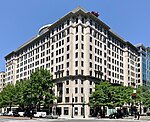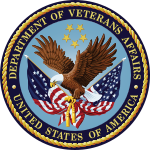Southern Railway Building

The Southern Railway Building is a historic office building located in Washington, D.C. It was built in 1928–1929 by local architect Waddy Butler Wood as the executive headquarters for the Southern Railway. The eleven-story building was designed in the Stripped Classical style with early Art Deco elements, and was constructed with a frame of steel and concrete fronted with limestone and set on a granite base. The site functioned as the railway's headquarters until 1982, when the company merged with the Roanoke, Virginia-based Norfolk and Western Railway. The newly-formed Norfolk Southern Railway moved its headquarters to Norfolk, Virginia, and the Southern Railway Building became privately owned with multiple tenants. It was listed on the National Register of Historic Places in 2016.
Excerpt from the Wikipedia article Southern Railway Building (License: CC BY-SA 3.0, Authors, Images).Southern Railway Building
K Street Northwest, Washington
Geographical coordinates (GPS) Address External links Nearby Places Show on map
Geographical coordinates (GPS)
| Latitude | Longitude |
|---|---|
| N 38.902222222222 ° | E -77.035 ° |
Address
WashingtonFirst Bank
K Street Northwest 1500
20420 Washington
District of Columbia, United States
Open on Google Maps








